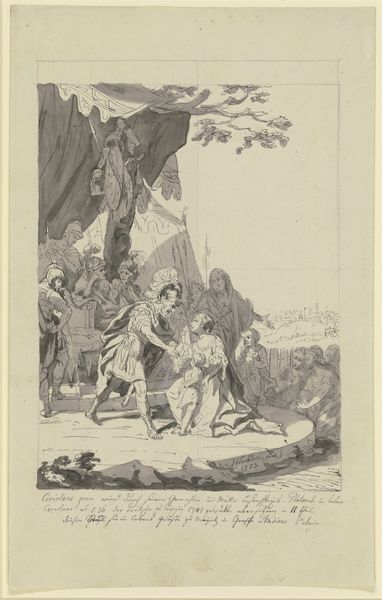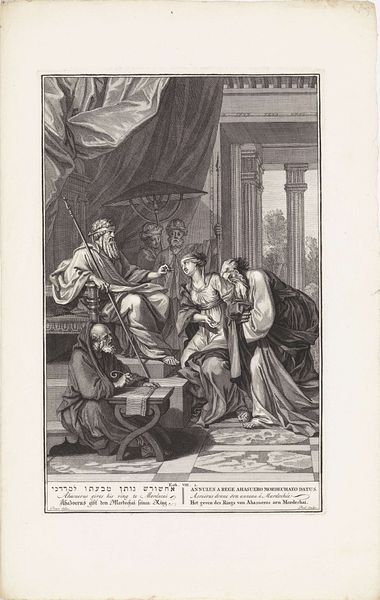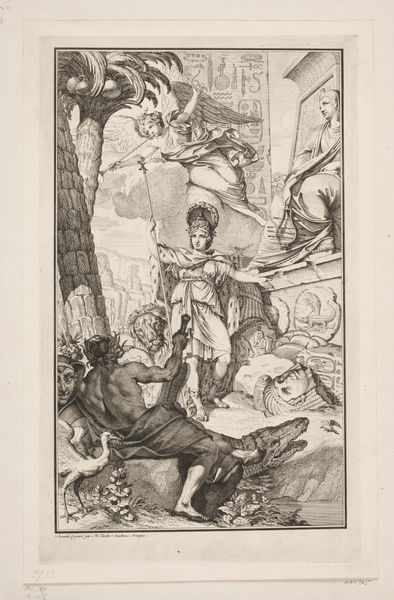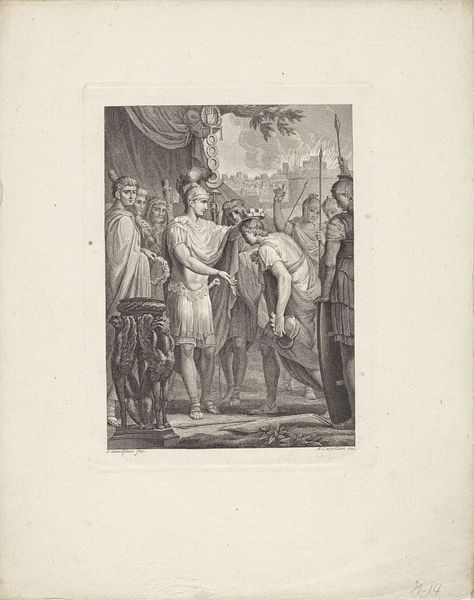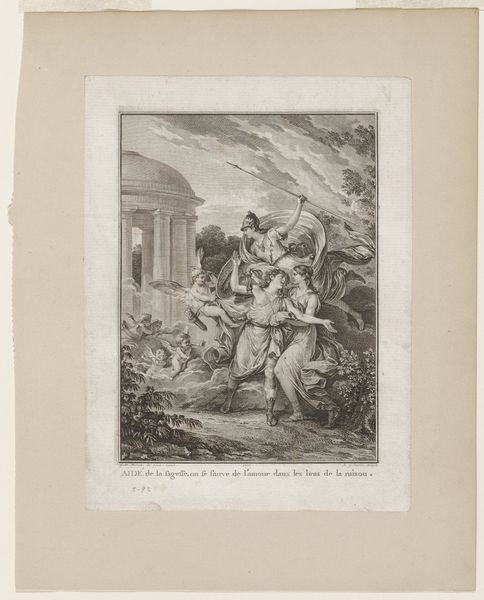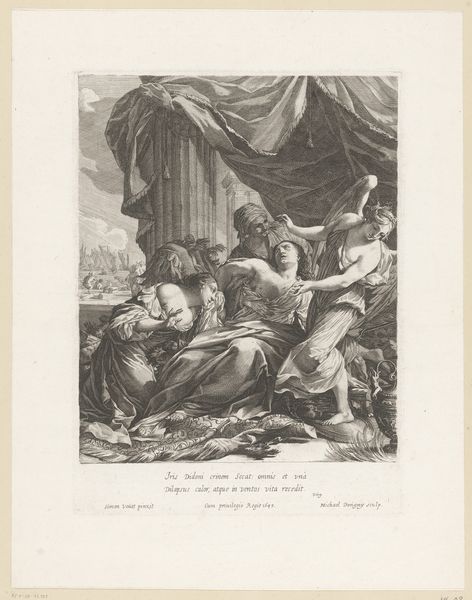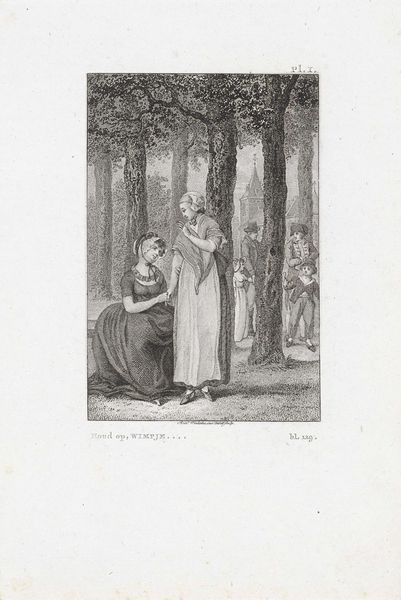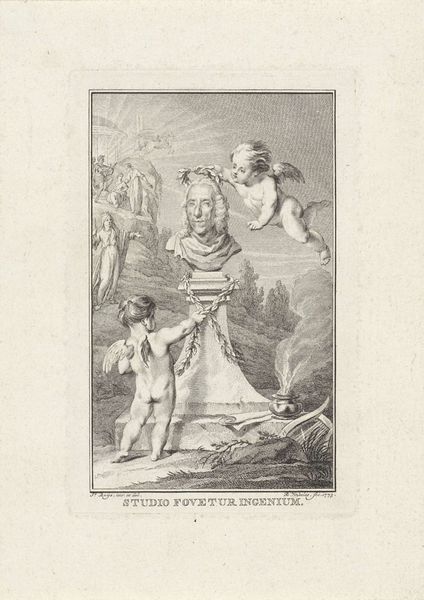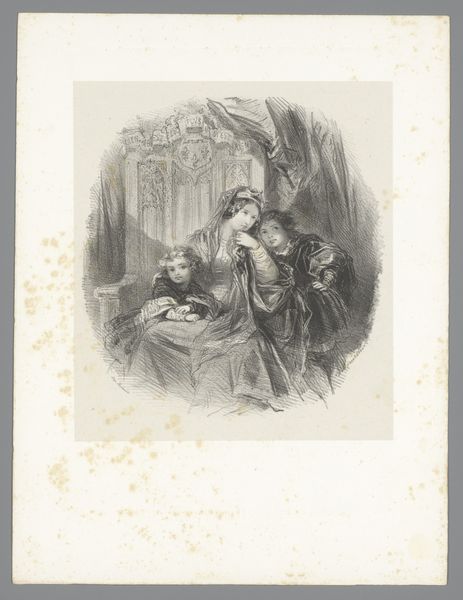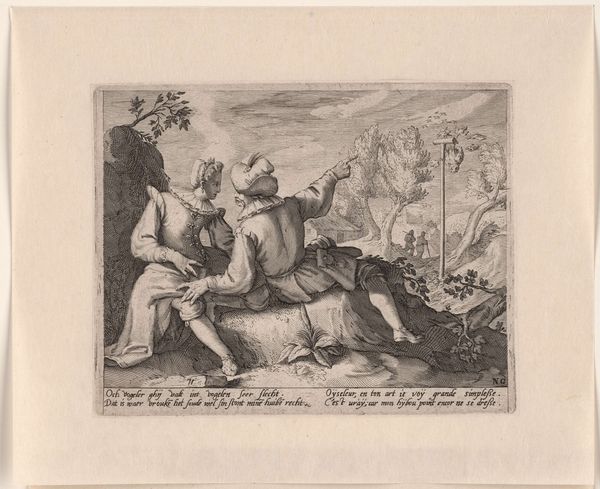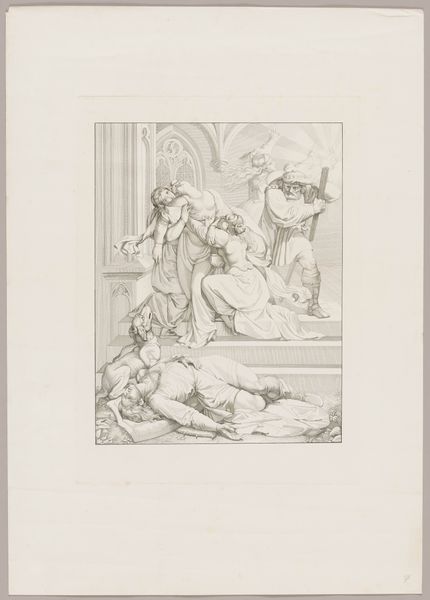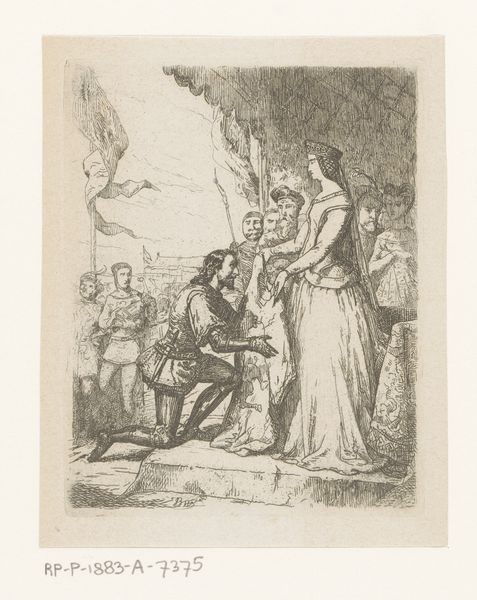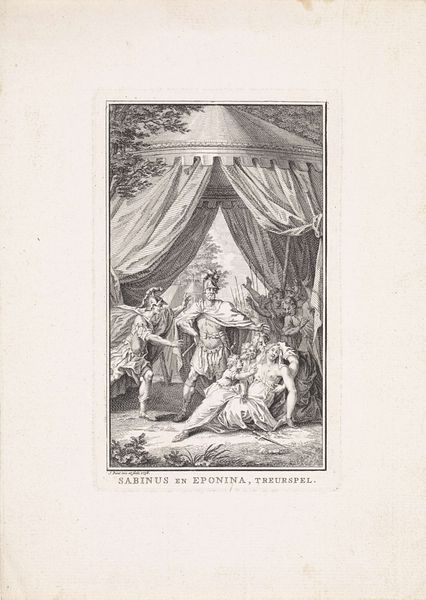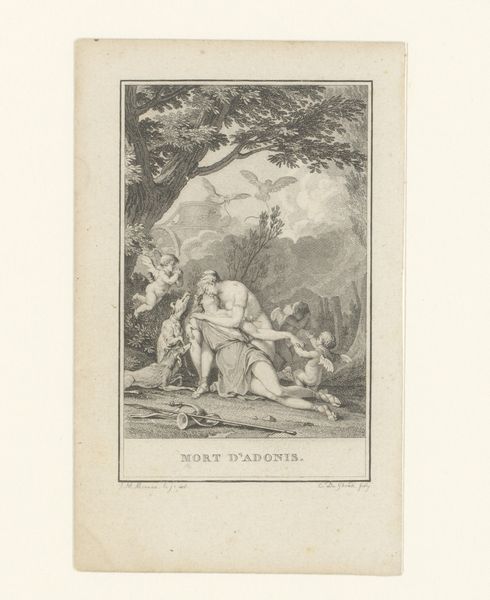
drawing, pencil, engraving
#
portrait
#
drawing
#
narrative-art
#
charcoal drawing
#
figuration
#
pencil drawing
#
romanticism
#
pencil
#
history-painting
#
engraving
#
watercolor
Dimensions: height 353 mm, width 262 mm
Copyright: Rijks Museum: Open Domain
Editor: This is "Wounded Knight on the Battlefield" by Wilhelmus Cornelis Chimaer van Oudendorp, dating from around 1840-1843. It's rendered in pencil and engraving, which is quite compelling. I’m struck by its somber mood and the contrast between the vulnerability of the fallen knight and the stoicism of those attending him. How do you interpret the composition of this piece? Curator: The composition directs our attention quite deliberately. Note how the artist uses a strong diagonal line, running from the lower right—where the knight's fallen armor lies—to the upper left, where the horse stands, tethered yet alert. The starkness of that line, and the acute attention to form, establishes a binary – a kind of tension - between action and stasis. Does the interplay of light and shadow accentuate this feeling for you? Editor: Yes, I can see that. The figures clustered around the knight are also mainly in shadow, contrasting with his exposed torso, illuminated and vulnerable. Curator: Precisely. Observe also the deliberate rendering of textures - the smooth metal of the armor, juxtaposed against the rough bark of the tree, and the delicate rendering of facial expressions. Each texture contributes to a broader dialogue within the frame. Are these material juxtapositions merely decorative, or are they fundamentally integral to the image's deeper purpose? Editor: I see what you mean; it's almost as if the artist uses the texture to show the different realms of the knight’s experience—from the harsh realities of battle to something more…human. It underscores that binary between the knight's exterior self versus the softer core beneath. Curator: Yes, I agree. That interplay of texture, and indeed tonality, shapes the viewer's reading of the entire artwork, transcending its immediate representational subject. What, would you say, do you gain from such rigorous observations about a drawing’s structure? Editor: Thinking through these binaries adds new layers to what I see beyond the immediate narrative! It prompts questions about how such compositional tensions influence my engagement with the piece, far more than its cultural context alone. Thanks! Curator: Indeed. Form allows us entry and deeper reading. The artwork’s dialogue is revealed when we analyze how these various intrinsic components function.
Comments
No comments
Be the first to comment and join the conversation on the ultimate creative platform.
